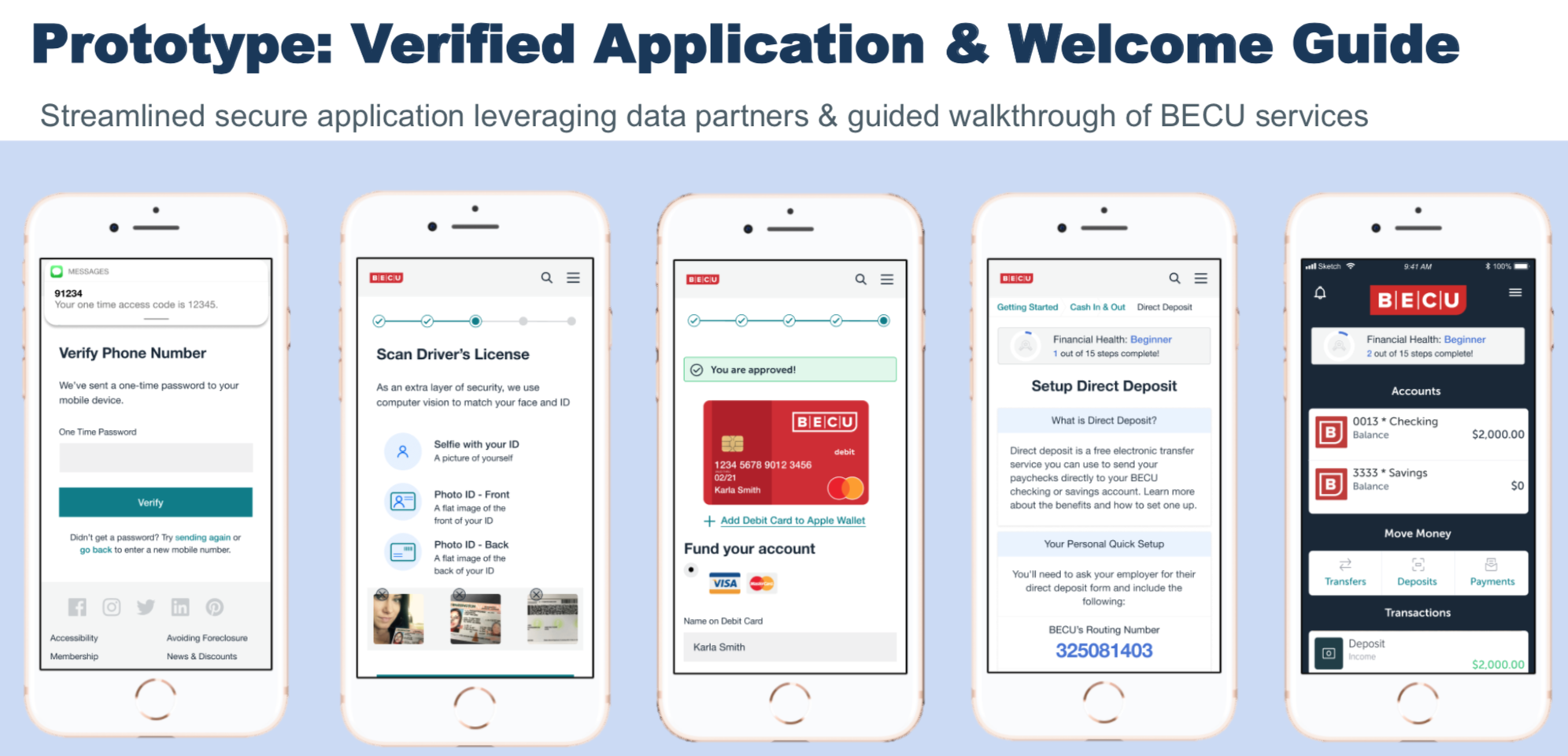Role: Senior UX researcher & designer
Tools: Contextual inquiry, Power bi, usability testing
contribution: successfully advocated for tools and budget to stop $12 mm in fraud losses
Challenge
I was hired as a Senior UX Researcher & Designer at BECU, one of the largest credit unions in the world. Our stakeholders were losing over a million dollars a month to fraudsters. The existing security protocols were keeping legitimate account seekers from joining, and failed to deter bad guys.
Team
I led research for the project, and collaborated at different times with UI designers, and the Financial Crimes unit. We also partnered with a startup (Blend) incubated at University of Washington CoMotion Labs.
Process
Before we could begin, we needed a process for recruiting members that had just joined the credit union. Working with Compliance, my manager and I laid out the proposed steps. Standard exclusions. Payment. How member interviews would be recorded in the CRM, so that Members were not confused by our invitation to be interviewed.
It took three months working with compliance to nail down an approved policy. In the meantime, we set to work on contextual inquiries with both Financial Crimes, and Member Services. I spent several days observing the work that took place, to understand why it could take so long to create a new account.
Above: the journey map I created to represent the experience of member enrollment, from delight to frustration. We augmented user interviews with hard membership data from PowerBI.
With our member recruiting policy approved, we randomly selected a group of ten account applicants that had been approved in the last two weeks. We conducted hour long interviews using the Kano method, and inspiration from Nathan Shedroff’s Making Meaning.
Before long, we learned that users favorite part of our enrollment application was when they got to select a graphic for their new debit card.
We also discovered that one of the key “step-up” security requirements was ineffective. One of our users told us about how she had driven over the mountains to Spokane from Seattle, to obtain the required social security card images from her parent’s home. Through secondary research, we found that social security cards could be purchased on the Dark Net for as little as $4!
Output
Using the framework of the Google Ventures Design Sprint, our team worked together with users to refine the experience. Here was what they thought of our new ideas:



